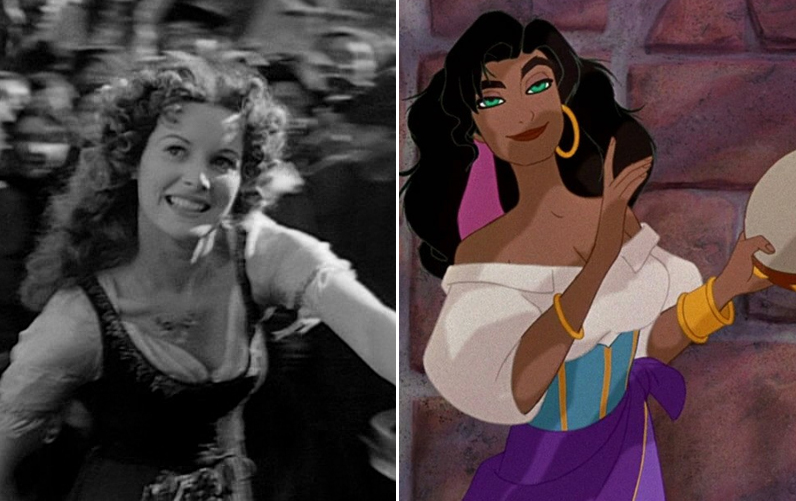In "The Honoraries" we're looking at the careers of this year's Honorary Oscar recipients (O'Hara, Miyazaki, Carriere) and the Jean Hersholt winner (Belafonte). Here's Nathaniel...
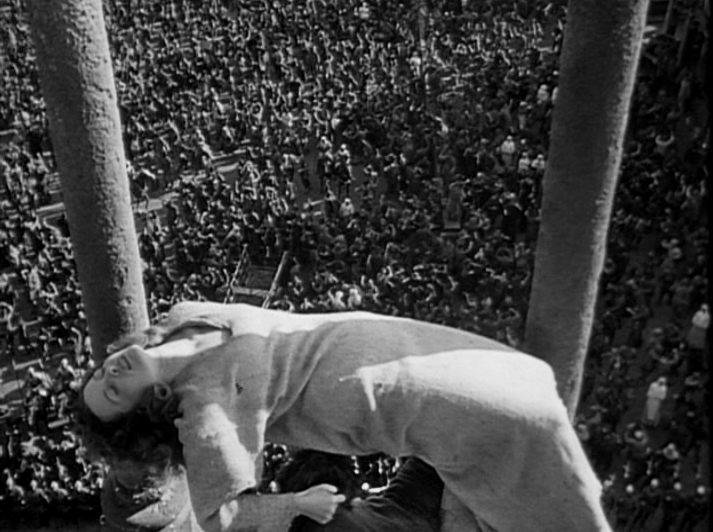
Sanctuary ! Sanctuary !
You often feel like you've seen the classics, even if you haven't. Victor Hugo published "The Hunchback of Notre Dame" 183 years ago and like most enduring classics, including Hugo's other culturally imposing masterwork "Les Miserables," it feels familiar even if you have no first-hand experiences with it. Hunchback, like Les Miz, has been adapted several times but has actually been musicalized more often. I regret to inform that I had never seen the 1939 RKO version starring Charles Laughton and Maureen O'Hara until now so the Disney version was my only true cinematic reference point, at first forcing comparisons where I didn't want to see anyway.
The easiest comparison to shake off was Esmeralda, since Maureen O'Hara's fresh faced breakthrough slipping through crowds and dancing in circles with her tambourine, beats Disney's Gypsy princess voiced by Demi Moore instantaneously. [More...]
Though I love Disney for delivering so many popular female characters for the masses in their animated musicals, they do have a tendency to blur together and meltdown into one boilerplate "Girlpower!" icon, despite the changes in dress, skin, and hair color from film to film. That's true of the 1990s especially. Pocahontas aside if you ask me to articulate non-visual personality-based differences between Esmeralda, Meg, Jane, and Jasmine, I wouldn't know how.
Which is not to say that Maureen's Esmeralda is much more three-dimensional. I'm not a 1930s historian but I'm willing to bet she's as much a product of her time (the 1930s) as Disney's gypsy was, and equally representative of feminine ideals: noble and kind, sensual but wholesome, caretaking and soft with men. Her version of girlpower spine shows not in 'don't underestimate me' sassiness but in persuasive appeals to the better natures of the men she mostly defers to. So, maybe she's more Ideal 1930s Wife than Full Rich Character but O'Hara hits all her beats beautifully and empathetically like a true pro and has no trouble capturing the attention of the men and, most importantly, the camera (it was er fourth film but her Hollywood debut). O'Hara was only 19 years old but, like her also very young contemporary Lauren Bacall she never really read girlish on the big screen. Even as a teenager her beauty is womanly which would serve O'Hara well later in her career as she aged -- you could argue that she was never sexier than when she played a 40something mom of two in The Parent Trap (1961).
Both adaptations are unfaithful playing fast and loose with Hugo's typically large novel, alterating the fates and perceptions of the main characters and dulling its tragedy; there's much more death on the page. But the '39 version is my preferred conception of the poet/actor Gringoire (Edmond O'Brien, 16 years away from his Oscar triumph in The Barefoot Contessa and looking very young) because it's the one that avoids the anti-intellectualism that so often pervades Hollywood movies from the studio era and still now.
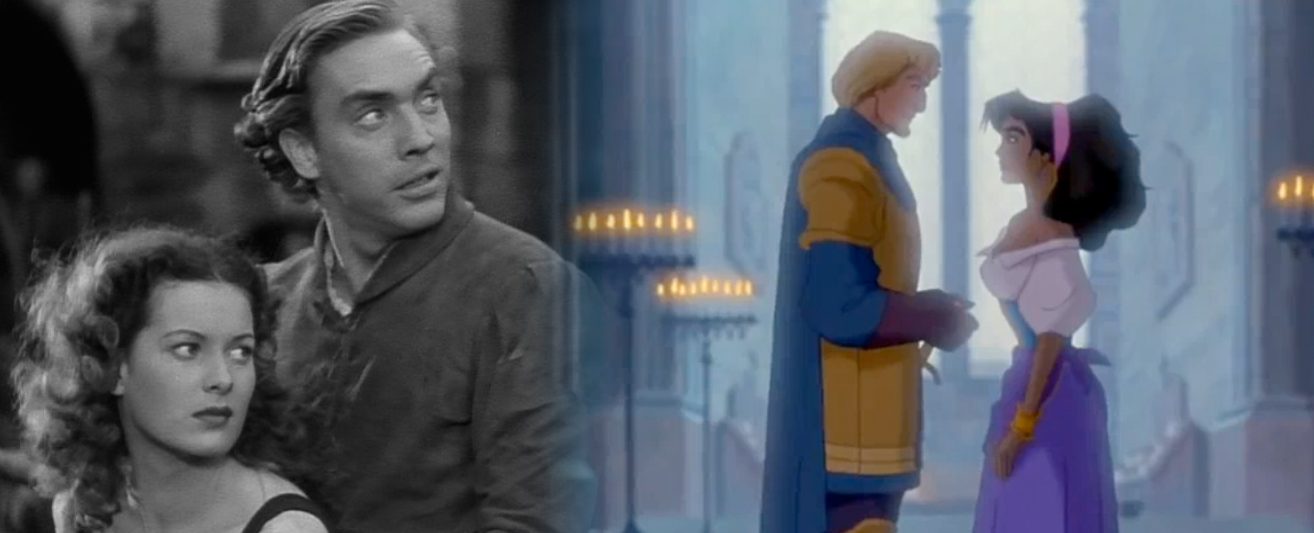
In the '39 film Captain Phoebus, who Esmeralda hastily falls for, only wants to bed her. She realizes this false love and eventually chooses Gringoire, a man of ideas who is all about the new printing press and the democraticization of information and power, who she wasn't initially drawn to. The Disney film omits the poet and the printing press and forces a romance between Esmeralda and Phoebus; they're far more comfortable with might-is-right actionable masculinity than men of ideas and political activism. Never mind that this Phoebus was not a good match for Esmeralda and never mind that her shifting perception of Gringoire in the '39 movie is a much better fit for the story's progressive ideals about not judging people based on their race or looks or your preconceived notions about them.
Though the 1939 movie lacks any passage as fully transcendent as the 1996's musical's daring, very adult film within a children's film that lasts from Esmeralda's prayer "God Help The Outcasts" through Judge Frollo's damning "Hellfire", the rest of it is far superior. (If Disney's animation team had had the strength of their convictions with that film, it could have been a masterpiece. See also: What Happened With Pocahontas) William Dieterle's golden age version never shies away from the adult problems: The way men blame women for their own weakness, the way poverty breeds crime, the way prejudices poison the well and blind everyone to people's individual character, and our unshakeable fascination with both ugliness and beauty.
For all of The Hunchback of Notre Dame's terrific production values (it was strangely only nominated for two Oscars but '39 was a stacked year) and its memorably bustling crowd-frenzy scope, it's most impressive when it goes quiet all around O'Hara, whether that's in her scenes with punishing (Judge Frollo) or merciful (King Louis XI) old men, building a believable friendship and maybe more with Gringoire, and especially in the juxtapositions of the her bewitching beauty with the hideously ugly Quasimodo (Charles Laughton) whether she's caring for him (mercifully bringing him water in the town square) or when he's protecting her in the cathedral.
This is my favorite cut in the movie: Quasimodo brings Esmeralda a bird as a gift...
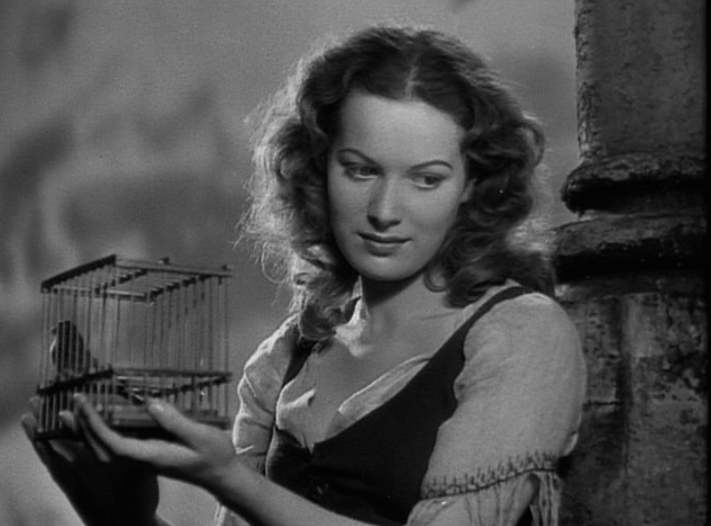
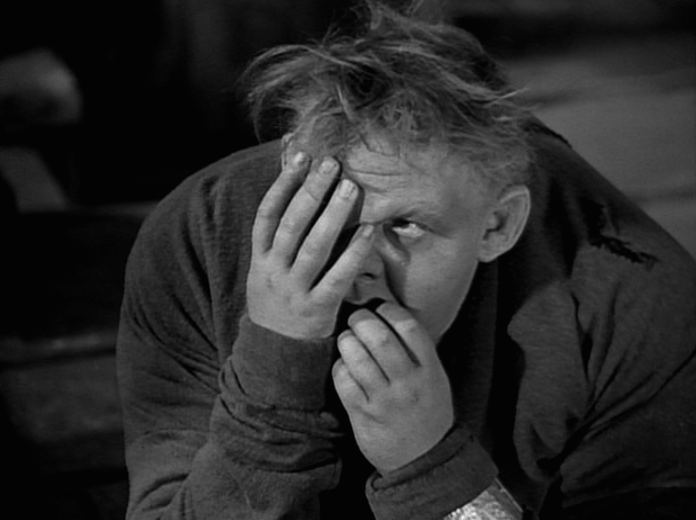
She looks at him with love, gratitude, and kindness. He returns her look shyly, covering the deformed parts of his face as if to both shield her from them and protect his own feelings. This wordless, gorgeous and wholly human exchange is a micro tearjerker within a macro story and one that endears you to them and the film forever.

Previously on The Honoraries:
Hayao Miyazaki
Belafonte in Beetlejuice
Belafonte in Carmen Jones
O'Hara in The Parent Trap
O'Hara in Black Swan
